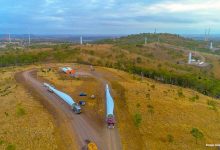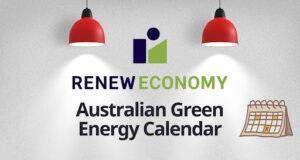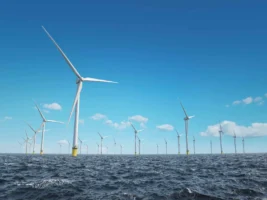The Queensland government says it has relaxed guidelines on one of its major state-owned electricity generators after a two-year direction that resulted in the state having the lowest wholesale electricity prices in the main grid, rather than one of the highest, and as cheap wind and solar start to flood the local market.
As we reported two years ago, the Palaszczuk government introduced the bidding guidance, along with plans to create a third state-owned generator focused on renewables and storage, dubbed “CleanCo”, which will finally come into operation in October.
The idea was to force wholesale prices, which had jumped by more than double in the past 18 months, back down to manageable levels. And the proposals had an immediate impact, with the futures prices for 2018 electricity prices dropping 15 per cent in a single day.
The bidding practices from the government-owned Stanwell and CS Energy had become something of a bad joke since the manipulation of the 30-minute rule was first identified in 2015, and the impact had been chronicled by the Australian Energy Regulator and others ever since.
Since those bidding rules were first introduced, the state has completed dozens of new large scale solar and wind farms, with energy minister Dr Anthony Lynham saying last week that wind can be bought now at $44/MWh, and solar at around $50/MWh.
The government and the company subjected to the revised bidding rules, Stanwell, confirmed that the restrictions had been relaxed from end of last financial year.
“That bidding direction ended on 30 June 2019,” Stanwell CEO Richard van Breda told an estimates hearing last week.
Energy minister Dr Anthony Lynham said the directions to Stanwell, along with other initiatives, ensured forward wholesale prices in Queensland were the lowest of the mainland regions in 2018-19 (which they were).
“The directions were not published, given they contained commercially sensitive information,” Lynham said. “However, it is clear that the market received the message that extreme wholesale prices are no longer acceptable. I can confirm that Stanwell is no longer subject to these directions.”
For many years Queensland – despite being the state most reliant on coal-fired generators – rivalled South Australia for the rank of most expensive wholesale price of electricity, thanks to the lack of competition in the local grid (although critics liked to blame South Australia’s on renewables)>
Since the direction was issues two years ago, Queensland’s wholesale prices miraculously fell to the lowest in the main grid in the 2018 and 2019 fiscal years. Now it has – for the first time – a growing portfolio of large-scale wind and solar to provide competition to the incumbent coal and gas plants.
CleanCo will come into effect on October 31, when it will take over the running of several key assets – including the Wivenhoe pumped hydro power station, and the Swanbank E gas generator, and several smaller hydro generators.
It also has a mandate to facilitate 1,000MW of new renewable generation by 2025, part of the state’s declared target of 50 per cent renewable by 2020, and one of its first jobs will be selecting mandates from a shortlist of 10 wind, solar and storage projects from the RE400 program that has been in abeyance for nearly two years.
Lynham said that Queensland is embracing renewables rapidly, with more than 3,855MW installed as at the end of May, 2019, though most of this was from rooftop solar, with the state installing a new rooftop solar PV system every 12 minutes.
“I am pleased to report that the Queensland government’s 3,000 megawatts of solar photovoltaic by 2020 target was met in 2018, two years early,” he said.
“The government is also working to usher in the next wave of renewables technology, with over 3,000 Queenslanders taking advantage of our interest-free loans for our solar and storage program.”
He said there are 26 large-scale solar projects in Queensland and another six to come.
“We are on to 50 per cent renewables by 2030 … on capacity, we are going to easily hit a 50 per cent renewable mandate. On output, we will get to 50 per cent renewables by 2030. I have no qualms in stating that we will get there by 2030.
“We need to have a target of 50 per cent renewable energy by that date, but we have to work with other states to achieve that. It is difficult without a federal Labor government.”
Lynham also ridiculed the push by the LNP – at both state and federal level – for new coal fired generators, and, most recently, nuclear power.
“Can you imagine the subsidies that would be required for a new coal-fired power station? A new coal-fired power station will deliver electricity at $140 per megawatt. I can get a wind farm down to $44. I can get solar at $50.
“Just yesterday we heard Angus Taylor talking about nuclear power. That is $200 a megawatt hour—four or five times the cost of wind farm energy. Imagine the subsidies that would have to be plugged in from a federal government to support coal-fired or nuclear power in this state?”
Lynham also noted that 5-minute spot prices in the local market had been hitting zero on many occasions in recent times – thanks to the huge amounts of rooftop and large scale solar – and this would be when storage facilities such as Wivenhoe would choose to pump water (or charge batteries), for use later on.
“That will benefit every Queensland family,” Lynham said. “Do you know where that power comes from, Mr Chair? That comes from the solar rooftops in Queensland. It will come from the 2,200 megawatts of solar.”










